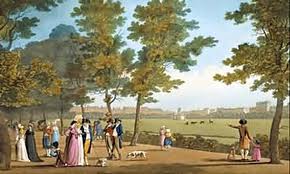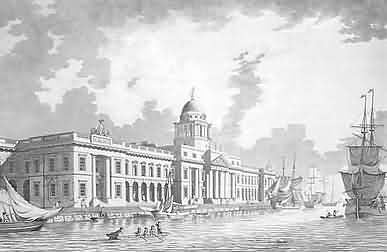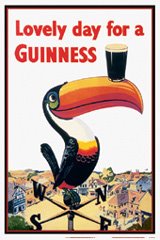Wall of Shame
OSCAR season Wall of Fame award: And the Fenway goes to… Slow Food Dublin
While surfing the net for the lore of Dublin coddle, the Editor found a site with the promising tag of “Slow Food Dublin.” Slow food is a good thing, Dublin is a good city and it now offers diners much choice of good food. All good, we ought to think, but we would be mistaken.
If the treatment of coddle in “Dishes named for Dublin” is representative, it would appear that the agenda of ‘Slow Food’ tilts to the political rather than culinary. This slant is all the more surprising because the article dates from 2010, a post-Troubles time, but then resentment knows no reason, as the reflexive hatred of an African-American president within certain benighted circles sadly shows.

Listeners need not have the aural capacity for hearing a dog whistle to discern the drumbeat of Slow Food Dublin in its disparate treatment of Theodora FitzGibbon and Monica Sheridan.
FitzGibbon is introduced as a “Thrice-wed” woman “who cooked with” a “hedonist,” not the first criteria that come to mind on the subject of food unless you are a Medieval cleric, but no matter. She also, according to Slow Food, “snootily dismisses” Dublin coddle with “class-conscious disapproval” in “a single paragraph.” The proffer of evidence on this indictment is brief. It is the entry on Dublin coddle from FitzGibbon’s Food of the Western World:
“A traditional Irish dish which used to be eaten on Saturday night in Dublin after the pubs closed. It consists of sliced onions, sliced potatoes, thick rashers of bacon and sausages put in a saucepan in layers. It is well seasoned and water to a depth of water of the saucepan is added; it is covered and cooked slowly for 1-2 hours.”
The Editor makes no claim to genius but cannot find a trace of anything but description; no patronizing, no snobbery, no ‘dismissal.’ She does, however find some rather egregious typographical errors in the Slow Food citation. In fact FitzGibbon wrote that “water to the depth of ¼ of the saucepan is added,” not the inane “water to a depth of water of the saucepan,” and cooks her coddle for 1½ to 2 hours.
Furthermore, The Food of the Western World is, as Slow Food would know if it consulted the subtitle of the book, an encyclopedia, not a collection of essays or recipes, and neither the length nor the factual content of the entry for coddle is atypical. Here, for example, is the one defining “douglas:”
“French beef consommé garnished with slices of cooked sweetbreads, artichoke bottoms, and asparagus tips.”
If The Food of the Western World indicates that FitzGibbon disdained coddle then she must have felt genocidal about douglas; its entry runs to fourteen words compared with sixty-three for the Irish dish.
Slow Food discusses a Douglas too, in this case Norman; he is identified as “the hedonist” who “cooked with” FitzGibbon “on the Isle of Capri.” That was in 1948 and makes for an interesting footnote because Elizabeth David had spent time on Capri with Norman Douglas before the war. He and David were lifelong friends despite their considerable difference in age, and she never really got over his death.
On the subject of relationships, FitzGibbon married twice, not three times, first during the Second World War to Constantine FitzGibbon, an American army officer, and then later in life to the filmmaker George Morrison. (“Women of history”) But hey, divorce is divorce, right?

Coddle, however, is not coddle the way that Sheridan would have us cook it. Her recipe specifies a miserly pound of sausage and even omits the essential potato. Undeterred, Slow Food Dublin proclaims that coddle is “dealt with briskly and comprehensively (and with none of the class-conscious disapproval of Theodora) by Monica Sheridan in her 1965 Irish Cookbook.”
Sheridan on coddle, as quoted with the usual errors by Slow Food:
“This is a dish that is eaten by families who have lived for generations in Dublin and who look upon the city as their local village. Sean O’Casey ate Dublin Coddle. Dean Swift ate it in the deasnery [sic] of St. Patrick’s Cathedral in the 18th century. I must say that I could live without Dublin Coddle, but if I thought it could make me write like Swift I would be quite prepared to lump it and like it. It is eaten especially on Saturday night when the men come home from the pubs.”
So Sheridan, putative champion of the Dublin workingman, derides his favorite dish. And aside from her speculation about O’Casey and Swift and ‘villagers’ (DeValera dinosaurs consider anything rural, however symbolic, superior to the city within the Pale), the background facts presented here are no different from the ones in The Food of the Western World.
The writing style is another matter; maybe a dose of coddle might have helped. As it is, the introduction to the dish combined with her rump of a recipe demonstrates that Sheridan is neither brisk nor comprehensive but rather awkward and incomplete.
FitzGibbon visited coddle at least three different times in print, apparently unbeknownst to Slow Food Dublin. In contrast to Sheridan, she provides a good authentic recipe, in Irish Traditional Food, and has nothing bad to say about it: “Combining two of the earliest Irish foods, this has been a favourite dish since the eighteenth century.” (Irish Traditional Food 118)
In the introduction to her recipe from A Taste of Ireland, FitzGibbon further explains that bacon and sausage are “two foods known since the earliest Irish literature…. Leeks and oatmeal were no doubt used in the earliest form of Coddle, but, since the eighteenth century, potatoes and onion have supplanted them.” She also recommends serving the dish with soda bread and stout, something she would not bother to do if she considered it a nonstarter. (Taste of Ireland 21)
Slow Food Dublin adds that coddle “is rarely encountered, even in the poorest Dublin homes, many will contend because it provides an all-too-vivid reminder of the bleak past when times were hard and diets meager.” This feeble stab at the politics of resentment and self-pity misses the point that coddle is good food. It also appears to be wrong.
When Darina Allen went in search of Dublin coddle for The Complete Book of Irish Country Cooking, she had no trouble finding it throughout the city, not least wherever taxis ply their trade:
“Every time I went to Dublin I would sound out a taxi driver about coddle. Most of them grew instantly nostalgic. Some talked of sneaking home to ‘the Mammy’s’ for a feed of coddle, but, interestingly, just as many talked about ‘the wife’ or ‘herself’ making it regularly. So there’s no question that coddle is alive and well and still being made on a regular basis in Dublin.” (Allen 120)
Anecdotal evidence from the United States reinforces Allen’s conclusion. The Editor knows a number of Dubliners abroad who relish coddle including Gerry Farrelly, a proprietor of the Fig Tree in Hoboken, New Jersey. He recalls that his mother always thickened her coddle with cornstarch; other innovators throw some white pudding into the pot to similar effect. Either way coddle keeps apace with other dishes, not least in the Editor’s kitchen, where it ranks among the most requested dinners that she cooks.

As an added bonus, the author of Slow Food Dublin has told readers a cautionary tale in printing an excellent example of the run-on sentence. This was not intended to be ironic:
“When Arthur Guinness brewed his first pints of porter at St. James’s Gate in 1759 and Saturday night revelers sought gastronomic comfort in a nutritious and substantial repast after a bellyful of the other at their local tavern, the coddle their patient wives might have concocted would not have been filled with flaccid grey sausages made from mechanically recovered remnants of fat and gristle mixed with a gansy-load of cereal to bulk it out and absorb all that fat but with meat and little else but meat; and the bacon in their coddle would more likely have been a nubbly dry-cured shoulder than a handful of slimy, paper-thin, tasteless slices that had been pumped full of water and chemicals.”
Perhaps, if we discount the serial speculation, this would be good to know except that once again the facts interfere with the presentation at Slow Food Dublin. While a brewery did open at St. James’s Gate in 1759, Guinness did not begin brewing porter there until 1778. Before then Guinness brewed English style bitter ales, but the introduction of “extra stout porter,” as it initially was called, proved so popular that by 1799 the brewer had abandoned ale altogether. (“Guinness 250”)
So cook some coddle, kick back, raise a glass of stout to Theodora FitzGibbon and have a laugh at the expense of Slow Food Dublin.
The britishfoodinamerica recipe for Dublin coddle appears in the practical.
Other entries for the Wall of Shame can be found under our features.
Sources:
Hannah Acton, “How bad is Guinness 250?” the critical, www.britishfoodinamerica.com (October 2009)
Darina Allen, The Complete Book of Irish Country Cooking (New York 1996)
Anon., “Women of History,” entry for “Fitzgibbon, Theodora” at www.abitofhistory.net
Theodora FitzGibbon, The Food of the Western World (London 1976)
Irish Traditional Food (New York 1983)
A Taste of Ireland (London 1968)

